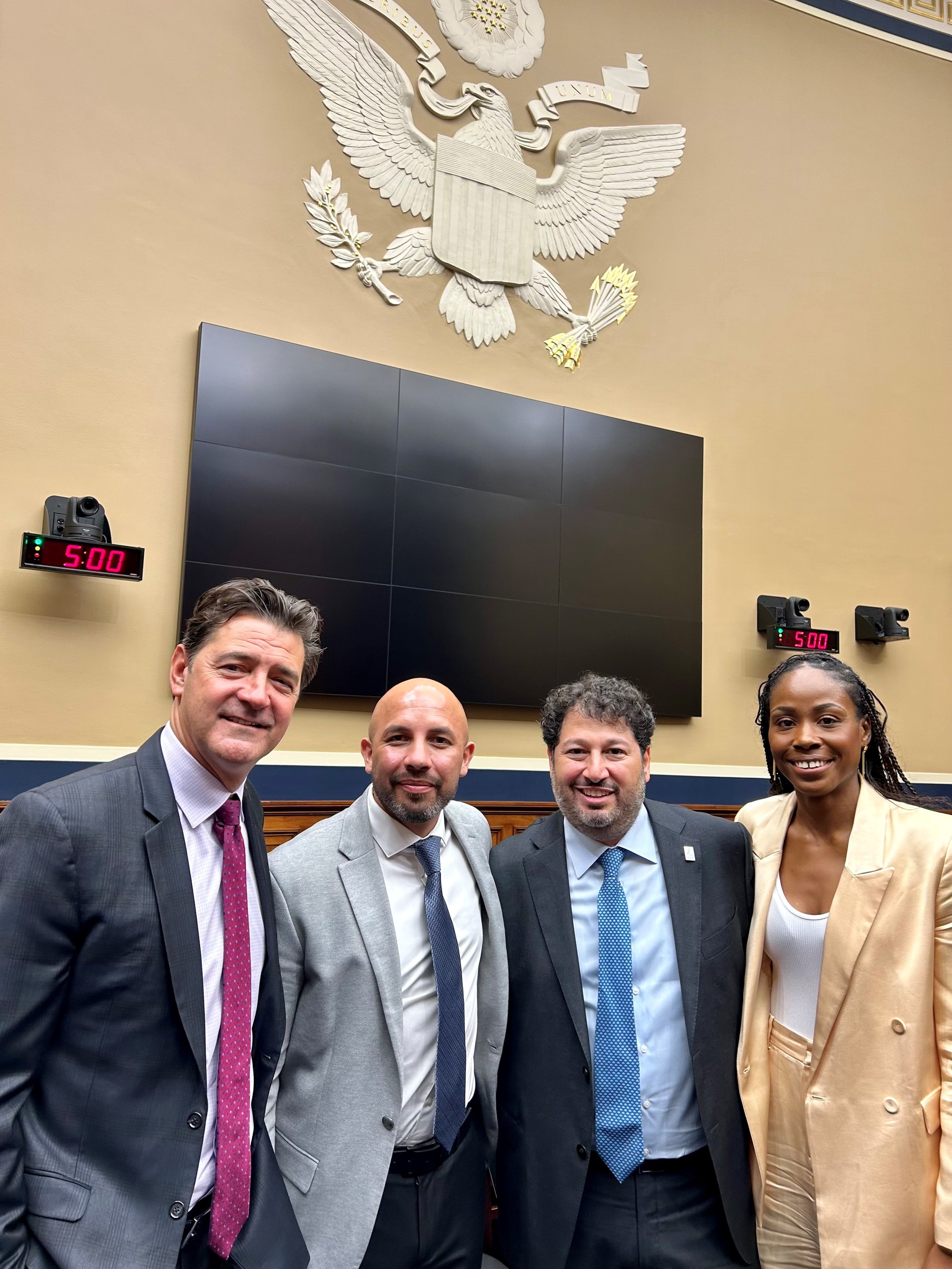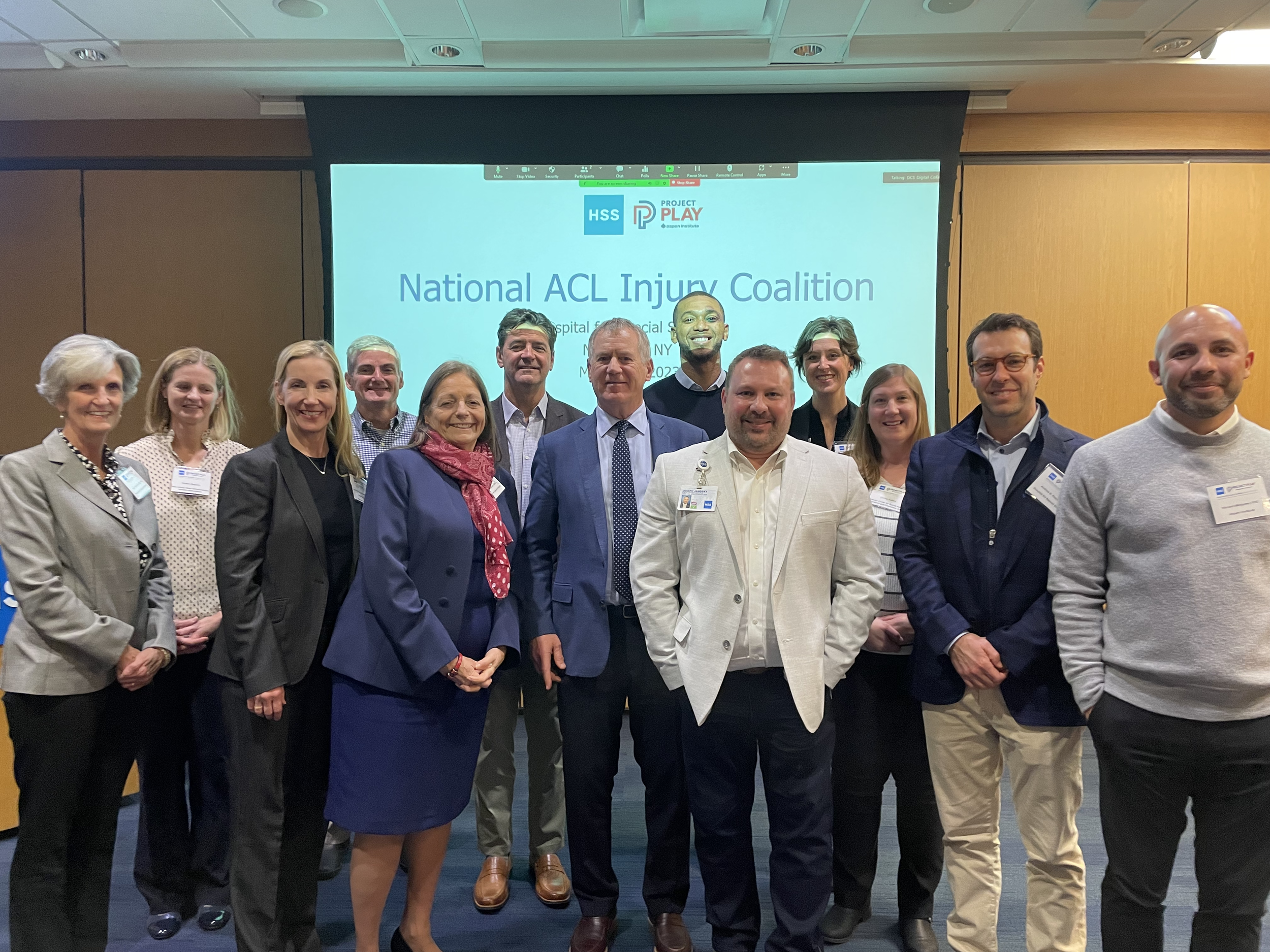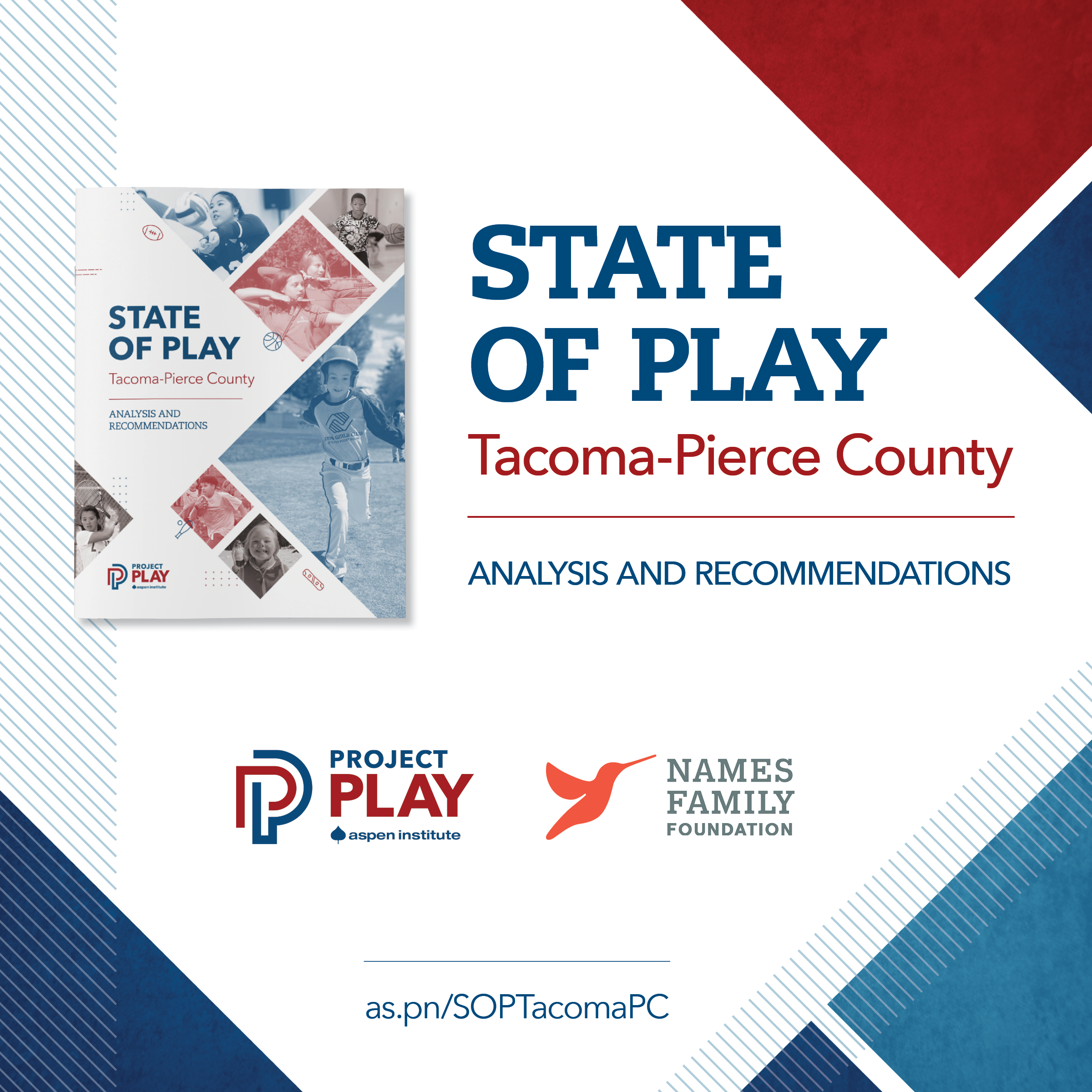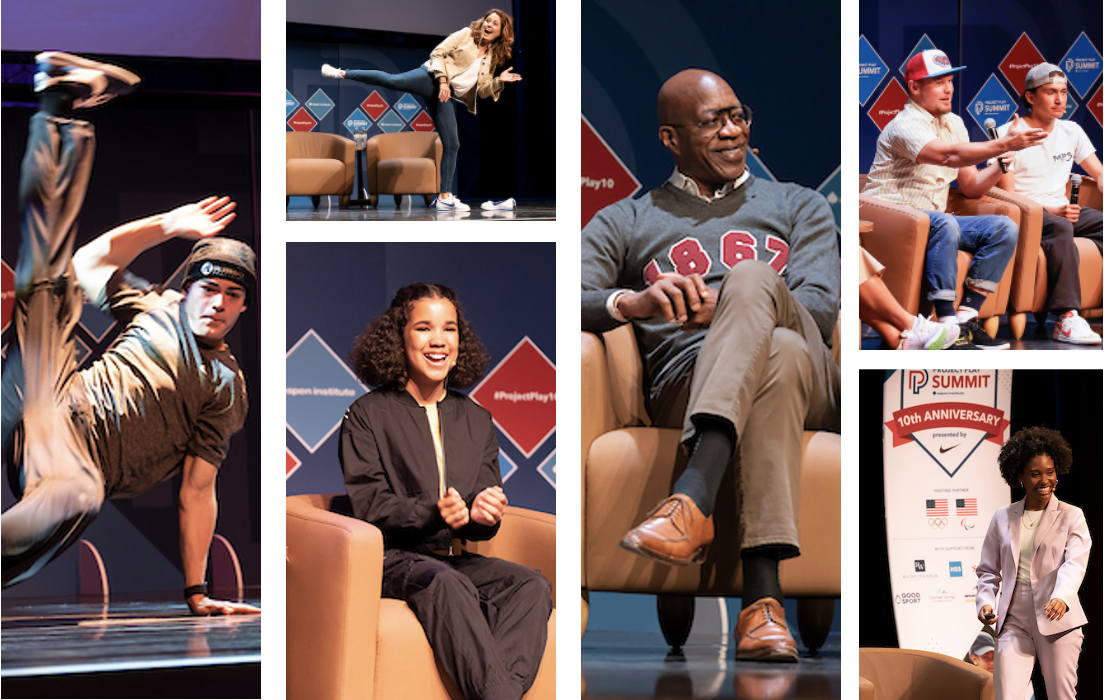2023 Project Play Impact Report
From Closing Gaps to Changing Systems in Youth Sports
When Project Play was launched in 2013, one of the first challenges attacked was simply establishing there was an access problem at the base of our sport system. Kids in low-income communities just don’t have the same opportunity to play as peers in wealthier zip codes. To the public and many leaders, that notion just didn’t make any sense – don’t many of the professional athletes we see in sports like football and basketball come from disadvantaged communities? Is there really a problem here?
As the backbone organization for Project Play, the Aspen Institute’s Sports & Society Program dug out and developed the data that showed kids from the poorest homes were half as likely to play sports. Then we started going around the country, working with partners to produce community State of Play reports (landscape scans) that sharpened insights on why opportunities had been lost. The first of these reports was in 2017 in Baltimore, a city where most neighborhood rec centers had been closed since the 1990s.
Major news media outlets began to take notice. National sport organizations, grassroots nonprofits, the business sector, and more foundations – most of them serving regional populations – began to dig in. The rationale for doing so was becoming clear, that kids whose bodies are in motion simply do better in life, that active communities are healthier communities, and that kids who play become sports fans. The value proposition for investing only grew with the pandemic and mounting youth mental health crisis.
Today, the concept of “sports equity” or “play equity” serves as a rallying call to close gaps for underrepresented youth populations. Local coalitions have emerged in Seattle, Philadelphia, Milwaukee, Southeast Michigan, Western New York, Los Angeles, Chicago, Oakland and elsewhere to advocate for as much, some of which grew out of State of Play reports or are supported by members of our Project Play 2024 roundtable. We celebrate their successes, and those of pioneering programs around the country, in communications with our network of more than 20,000 leaders and at events including the annual Project Play Summit.
National data show gaps in participation rates are closing, as our 2023 State of Play report shows. That’s not just between kids from homes of low vs. high income, but girls vs. boys. However, divides remain wide in many areas of the country – and overall, barely half of all youth still play sports. Our sport system remains fundamentally flawed even for the so-called “haves” in the model, as evidenced by declining team participation rates, more serious knee injuries, and other indicators.
Equity as a goal has its limits when half of kids playing is the ceiling, and the ceiling is caving in places.
So, what if, collectively, we also built a sport system that doesn’t create so many gaps in the first place? One that structurally doesn’t so easily price out, push out, and lock out kids who want to play? One that rewards national and grassroots sport providers for prioritizing participation growth, safety, and human development? That’s only going to happen with a rethink of sport governance in this country, of the policies that shape organizational and human behavior in the $30 billion-plus youth sports industry.
In 2023, Aspen began laying the groundwork for a public conversation on sport governance. It’s a big one, and not the only contribution we hope that we and the Project Play network made in the past year.
WORLD SPORT SYSTEMS RESEARCH
The reason we’re bullish on improving governance is it has been useful in other countries. Aspen recently published summaries of the sport systems of the United States and 11 peer countries, analyzing the structure and performance of those systems at the youth and elite sport levels. Grades and flow charts were drawn from existing studies and supplemented with our own interviews from research led by Ashleigh Huffman, former U.S. State Department chief of sport diplomacy. The U.S. earned a C grade for Youth Sport Participation Rate and a D for Government Support.
No sport system is perfect, we found. But common themes emerge among those countries that earn the highest grades for youth sport, based on participation rates among youth ages 6-17. Four success factors: 1.) Public policy prioritizes mass participation over elite athlete performance, 2.) Ecosystems are connected from grassroots to treetops, 3) Governments are engaged, and 4.) Financial incentives drive progress. Read our blog on key findings, and summaries of all countries. We also created two-page summaries of each country, which can also be found by clicking on the country links below.
Next: In 2024, Aspen will produce additional research and host events and panels designed to inform what’s possible at every relevant level – from the federal to local (city/county), club to school.
OLYMPIC REFORM COMMISSION
The Commission on the State of United States Olympics and Paralympics was created by Congress to study, among other areas, the function of the U.S. Olympic & Paralympic Committee and its affiliated National Governing Bodies of sports. Those entities have played key roles in the youth sport ecosystem since the 1978 Amateur Sports Act asked them to coordinate amateur sports activity across the country.
Due to bureaucratic red tape, the Commission was unable to get started on its study until this year, three years after federal law ordered its formation. Faced with a September 2023 deadline, the Commission asked the Aspen Institute, as a respected, nonpartisan, not-for-profit organization, if it could serve as fiscal agent to allow its staff the runway to complete the report by next spring. The Aspen Institute granted that request, which is limited to providing accounting and back-office services. The Aspen Institute and Sports & Society Program have no editorial control or oversight of the report, which is an independent product of the Commission.
Like dozens of leaders and organizations, Aspen staff have shared insights with the Commission from our extended study and engagement with the landscape of youth sports. At a September 2023 hearing, Sports & Society Program Executive Director Tom Farrey proposed financial incentives to encourage NGBs and grassroots sport providers to promote participation and safety at all levels. Program manager Vince Minjares spoke on the value of coach education. Other speakers included executives from LeagueApps, PeacePlayers, and the USOPC.
Next: Aspen will facilitate public discussion of the report’s recommendations when released in early 2024.
SOCIAL BENEFITS OF YOUTH SPORTS
One of the recognized challenges in unlocking more investment in organizations serving youth through sports is demonstrating the value to non-sport sectors. A technical advisor to the Project Play 2024 roundtable, PHICOR (Public Health Informatics, Computational, and Operations Research team at the CUNY Graduate School of Public Health and Health Policy in New York City) released projections in May suggesting that $57 billion from direct medical savings and worker productive gains would be derived if the nation achieves the Healthy People 2030 target of 63.3% youth sport participation by the end of the decade. That’s up from 50.7% in 2021-22, the latest data available from the U.S. Census Bureau.
Aspen staff contributed to the research, along with the Office of Disease Control and Prevention at the U.S. Department of Health & Human Services, among other groups engaged with Project Play.
Next: Project the mental health benefits and costs savings derived from such a lift, and rally organizations across the Project Play network to treat the 2030 target as a shared goal.
ACL INJURY PREVENTION COALITION
Serious knee injury is a major problem among participants in high school sports and can bring physical, mental, and financial impacts that can last a lifetime. Supported by Hospital for Special Surgery (HSS) and Aspen, the National ACL Injury Coalition was created to develop policies, practices, and partnerships that can reduce the risk of anterior cruciate ligament injuries. The three-year initiative is a major activation of our Reimagining School Sports project that aims to get and keep more students playing sports.
Members of the coalition include experts from the New Jersey State Interscholastic Athletic Association, Emory University Sport Performance and Research Center, National Federation of State High School Associations, Players Health insurance company, Cedars-Sinai Kerlan-Jobe Institute, US Youth Soccer, Datalys Center, and U.S. Centers for Disease Control and Prevention. Leaders and insights from the project were featured in major media coverage tied to the 2023 FIFA Women’s World Cup where several top players sat out with ACL injuries, and HSS launched a free app (RIIP REPS) that can be used by coaches to promote neuromuscular training exercises that can prevent injuries among athletes.
Next: Develop a free toolkit that athletic directors and club administrators can use to broaden adoption of knee injury prevention activities. Start by targeting sports with the highest injury rates.
STATE OF PLAY: TACOMA-PIERCE COUNTY
In October, in partnership with the Names Family Foundation, Aspen released its 12th comprehensive landscape scan of a community, State of Play Tacoma-Pierce County. The report found that Pierce County youth who are physically active reported more excitement, happiness and motivation than inactive children, who had higher rates of nervousness, anxiety, worry and depression. For example, 25% of youth who said they have zero days of physical activity reported feeling depressed or hopeless nearly every day, more than twice the rate (11%) of those who reported being active every day.
State of Play reports can be powerful tools that unlock grantmaking and other opportunities to build healthy children and communities through sports. This year, the Seattle-area coalition that emerged from our report with the University of Washington and other partners played a leading role in Washington State passing legislation to mandate recess in schools. In September, Stephen and Ayesha Curry's Eat. Learn. Play. Foundation pledged to raise and invest $50 million to support Oakland schools, a plan that will include a variety of free, high-quality sport opportunities for K-8 students.
Next: In 2024, State of Play reports will be released in Kansas City, Colorado communities in the Roaring Fork and Colorado River Valleys, and Baton Rouge, Louisiana.
BIGGEST SUMMIT TO DATE
In May 2023, more than 625 change-makers joined us for the 10th anniversary Project Play Summit, hosted in Colorado Springs. We considered the wins from the first decade of Collective Impact, charted next steps in building healthy children and communities through sports, and hosted workshops on how to partner with philanthropy, NGBs, schools and key institutions. Pearl Jam bassist and skatepark builder Jeff Ament joined a panel exploring the how sport helps Native American youth. Co-emceed by Kevin Carroll and Julie Foudy, we also had fun, reminding everyone why the word Play is baked in the initiative name.
Next: The 2024 Project Play Summit will be hosted May 14-15 in Baltimore. Get on the presale list.
SERVICE LEARNING THROUGH SPORTS
For school-age youth, service learning begins with organized acts of service for real-world challenges. The more that service can meet a recognized need and improve systems or lives at scale, the better. Leaders are born from such work.
In partnership with Allstate Foundation, Aspen will support youth committed to making sports more accessible in their community. Inspired by our School Sports Equity Toolkit and launched in November 2023, Service Learning through Sports provides $2,000 micro-grants and mentorship programming to U.S. high school students who lead, or aim to lead, a project or initiative addressing an issue of sports access.
Next: Select the 2024 cohort (the application is open through Dec. 15), host the group at a two-day meeting in Washington, D.C. in the spring, and mentor them with the support of proven student leaders.
COLLECTIVE ACTION
As always, many of the most significant efforts introduced in the past year came from Project Play partners. In Collective Impact theory, these are called Mutually Reinforcing Activities, actions that align with but are developed on their own by organizations committed to the shared goals of the initiative.
Just a few highlights: Major League Soccer introduced MLS GO, low-cost leagues that align with the Project Play 2024 roundtable goal of revitalizing in-town rec leagues. Under Armour committed to growing middle school sports in Baltimore. Nike invested in research-backed, inclusive and healing-centered coaching. The USOPC released the Quality Parenting Framework with Utah State University. Stack Sports hosted its latest sport sampling festival for youth in Colorado Springs after the Summit. The DICK’s Sporting Goods Foundation launched “75for75,” a new grant program that provides $75,000 each to 75 youth sports organizations. U.S. Soccer released a strategic vision to grow the game, especially among Black and Hispanic children.
Next: More shared activities as our industry roundtable moves into its next iteration in 2024.
Bravo to everyone who mobilized to help improve the state of play for kids in the past year.








